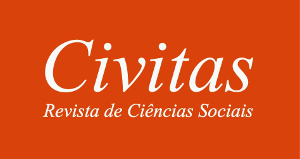Abstract:
I aim to demonstrate two methodological contributions of Henri Lefebvre's rhythmanalysis to the problem of how society transforms itself through the mediation of social practices that (re)produce themselves in and through the more or less technological objects and spaces that are entailed in the everyday life of cities engulfed by the possibility of modernity. First I elucidate rhythmanalysis, and its connection with Lefevre's thought. Hence the theoretical peculiarity of my statement will come to the fore. Its empirical pertinence, though, are briefly shown in the second section. Based on photographic and ethnographic data of my research on the present-day public streets and squares of the historically oldest São Paulo perimeter (Frehse, 2011FREHSE, Fraya. A sociedade da rua em São Paulo: a cidade fora dos muros. Projeto de Pesquisa. São Paulo: Departamento de Sociologia da Universidade de São Paulo, 2011, mimeo.), I point out what human bodies that physically cross or stay there on a regular basis may disclose about the rhythm of sociocultural changes in this present-day megacity - and, thus, about rhythmanalysis as a way of empirical apprehension of clues of the social change which is historically possible in the everyday life experienced in urban space.
Keywords:
Rhythmanalysis (Henri Lefebvre); Social change; Everyday life; Rhythm; Urban space

 [© Militão Augusto de Azevedo; Fonte: Arquivo do Estado de São Paulo]
[© Militão Augusto de Azevedo; Fonte: Arquivo do Estado de São Paulo] [© Militão Augusto de Azevedo; Fonte: Coleção Jamil Nassif Abib]
[© Militão Augusto de Azevedo; Fonte: Coleção Jamil Nassif Abib]
 [© Militão Augusto de Azevedo; Fonte: Coleção Jamil Nassif Abib]
[© Militão Augusto de Azevedo; Fonte: Coleção Jamil Nassif Abib]
 [© Militão Augusto de Azevedo; Fonte: Arquivo do Estado de São Paulo]
[© Militão Augusto de Azevedo; Fonte: Arquivo do Estado de São Paulo]
 [© Fraya Frehse; Fonte: Coleção Particular]
[© Fraya Frehse; Fonte: Coleção Particular]
 [© Fraya Frehse; Fonte: Coleção Particular]
[© Fraya Frehse; Fonte: Coleção Particular]
 [© Fraya Frehse; Fonte: Coleção Particular]
[© Fraya Frehse; Fonte: Coleção Particular]
 [© Fraya Frehse; Fonte: Coleção Particular]
[© Fraya Frehse; Fonte: Coleção Particular]